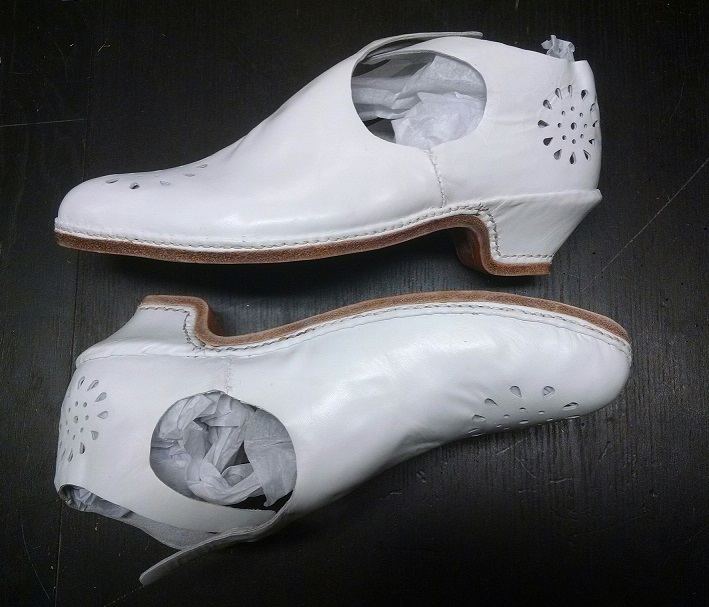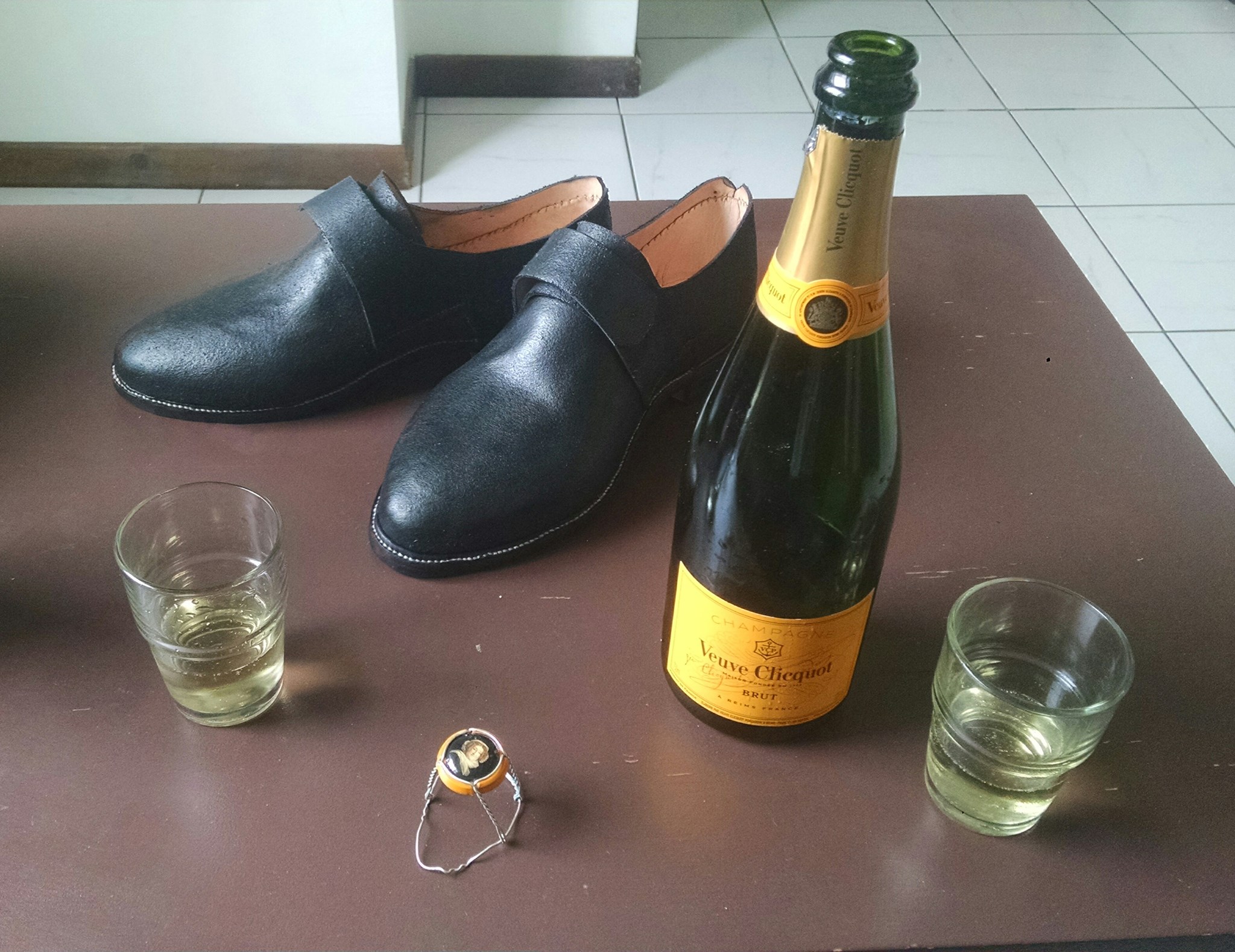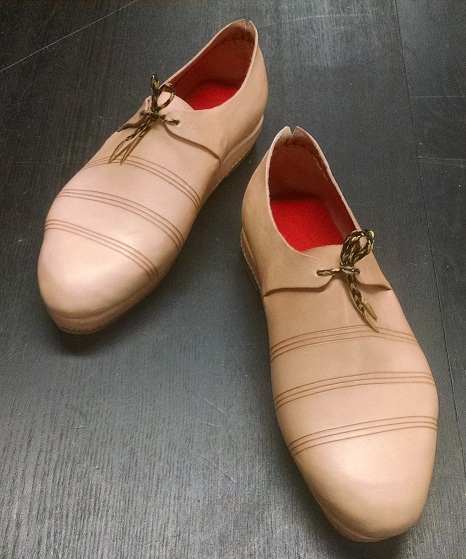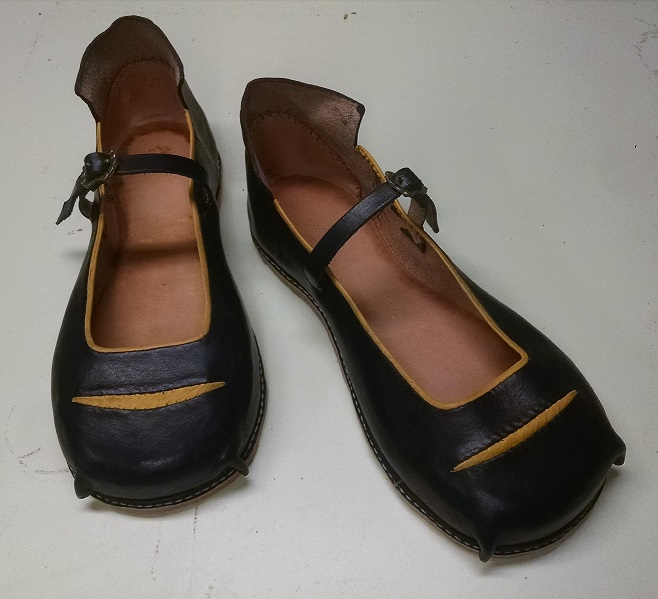This pair was specifically requested to be white. I, and like many other shoemakers, I’m sure, hate working in white. Why? Because you have to take such care with making sure your hands, your apron, your mind (some being more difficult than others), are all sparkling clean. Further, this leather was a bit trickier to deal with – I don’t often use chrome-tanned leather, but this was per specific request. Additionally, the leather was actually quite thin, so I used a completely a-historical technique to cement two layers together. In this manner, they had the firmness and stability of an alum-tawed calf, but also its flexibility. In any event, white and cream shoes were all the range in the 1620s – this painting of Sir Thomas Parker of Ratton by Marcus Gheeraerts the Younger, located in the National Trust, Saltram, shows a fine example upon which this pair was based.
The use of this leather came at something of a price – although we avoided the significant cost needed to purchase alum-tawed calf (which is beautiful, and well worth it), one can note a bit of wrinkling at the top of the vamp, and some also on the heel covering where mere tugging and tapping of the leather would normally arrive at a satisfactory smoothness. I also notice that I am still stitching a little too high up on the rand, especially at the heel. Period examples tend to be almost touching the sole, as shown in the Ashmolean heels here. Improvements, no doubt, for the next project!




